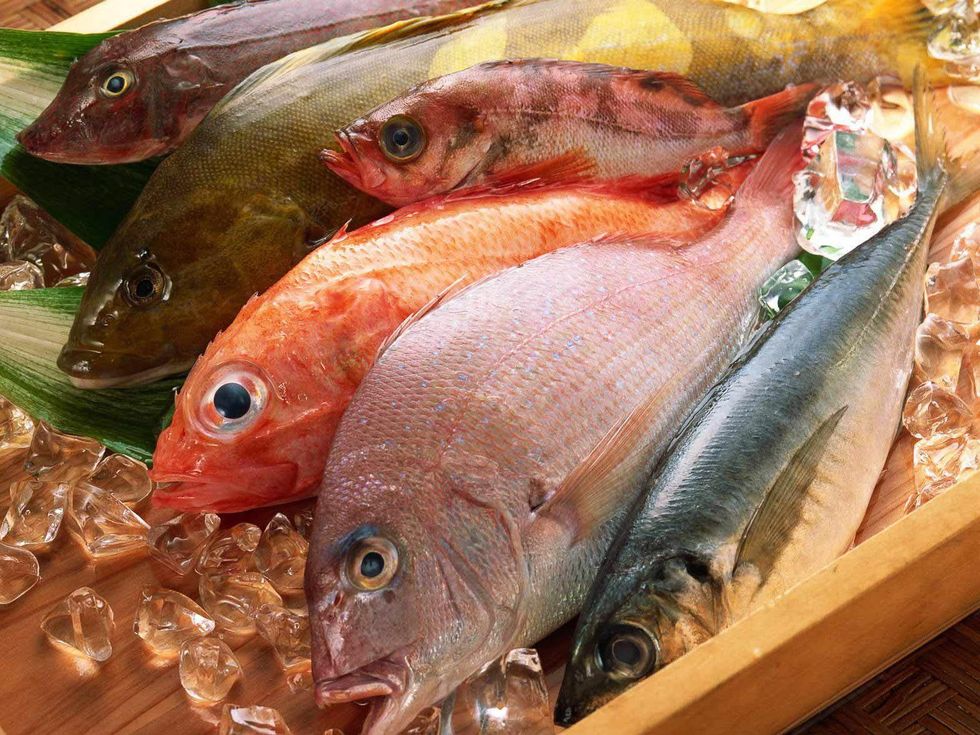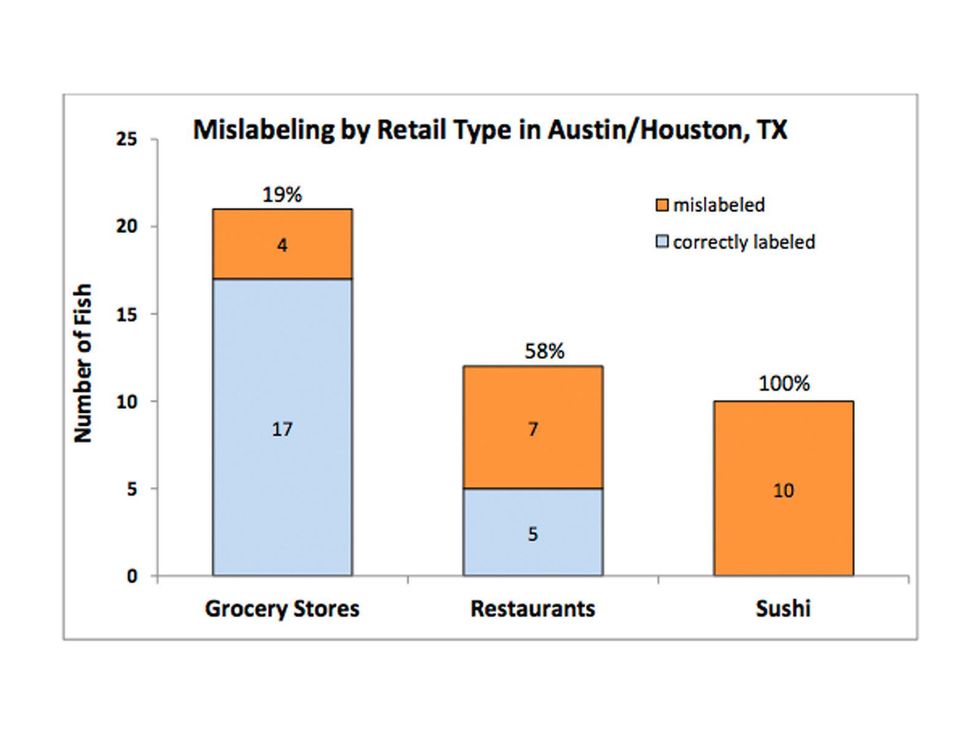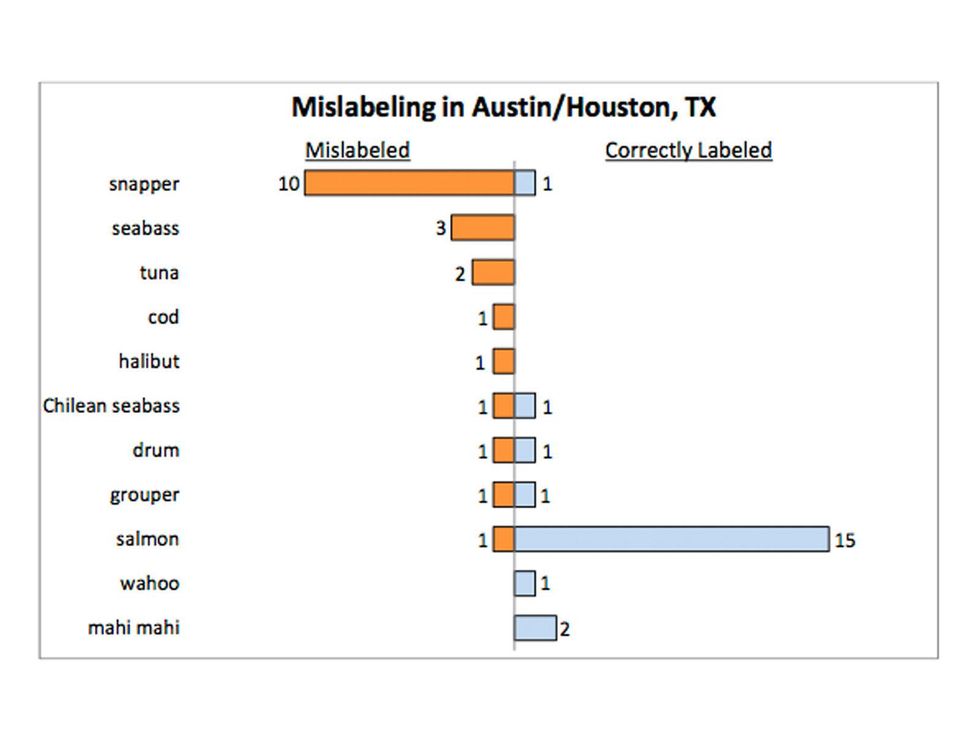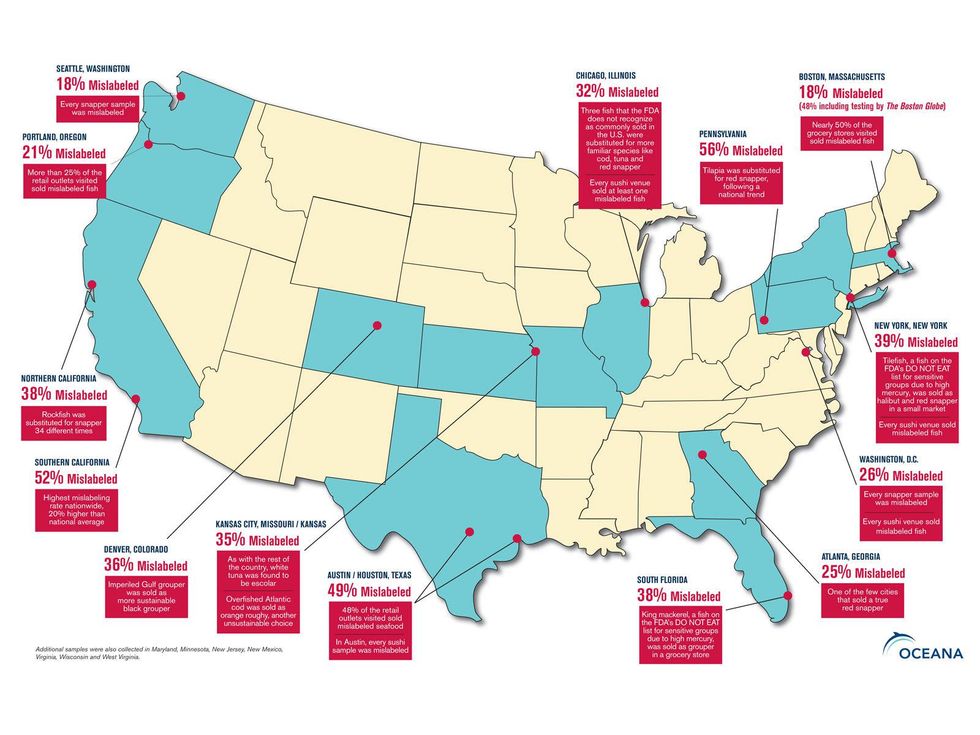Lookin' for legit Red snapper
Mystery seafood: Half of all fish sold in Texas is mislabeled, study finds — restaurants are biggest culprits
You know that red snapper you ate the other night? Yeah, the one covered in the lemon caper sauce?
Well, your chances of actually eating snapper are pretty slim, at least according to a new study by conservation group Oceana that found nearly half of all fish sold in Texas was mislabeled.
Of the eight "red snapper" samples DNA-tested in Austin and Houston, not a single one was legit.
And it was the mighty red snapper with the worst track record. Of the eight "red snapper" samples DNA-tested in Austin and Houston, not a single one was legit — three were tilapia, two were breams and three were cheaper snapper varieties.
Out of 43 samples collected in the state, only 22 were properly identified, giving Texas the second-highest fish substitution rate in the county after Southern California. Every piece of sushi tested, all from Austin, was incorrectly marked. Roughly 60 percent of fish from restaurants was mislabeled, with grocery stores faring the most accurate at a rate of 19 percent.
See pages 57 and 58 of the report for Texas info.
Insider knowledge
As owner of the widely-respected Airline Seafood in Montrose, Stephen Berreth has more than three decades of experience in the industry. He and his team typically source from Gulf fisherman to assure both freshness and legitimacy. They'll even review original invoices with his customers, if need be.
After spending years working closely with many of the city's top eateries, he feels the Oceana report is somewhat inflated.
"A good chef will be able to spot the difference. But it'd be harder for diners, especially if the fish is covered in a sauce."
But with the U.S. importing 90 percent of its seafood — much of it frozen — anyone looking to pull the wool (or scales) over diners' eyes has more opportunities than ever. In fact, the Food and Drug Administration only inspects about 2 percent, according to a recent NPR piece.
"Take the American Gulf snapper, the king of snappers," Berreth explains.
"There are so many other kinds available now. People can buy an inferior species, like the silk snapper, and serve it as the real thing. A good chef will be able to spot the difference. But it'd be harder for diners, especially if the fish is covered in a sauce."
Consumer advice
Ryan Pera — owner of Revival Market, the Heights store known for its focus on locally-sourced food — tells CultureMap that the best defense against mislabeling is to buy from people you know and trust. And that goes for average consumers and experienced merchants alike.
"It's important to ask questions if your unsure about an item, especially when it comes to fish. Albacore and red snapper have been getting the most attention it seems, so its always good to know when and where the fish was caught. Also be careful if the skin's not on it. That can be a tell-tale sign."
As local chefs like Justin Yu and Chris Shepherd continue to boast a laser-sharp focus on regional food, Pera says long-forgotten varieties of local Gulf fish once tossed aside by fisherman (known as bycatch) are getting new foodie attention.
"There's so much amazing diversity right there in the Gulf. Labeling these new types of bycatch correctly is actually a point of pride for us."




